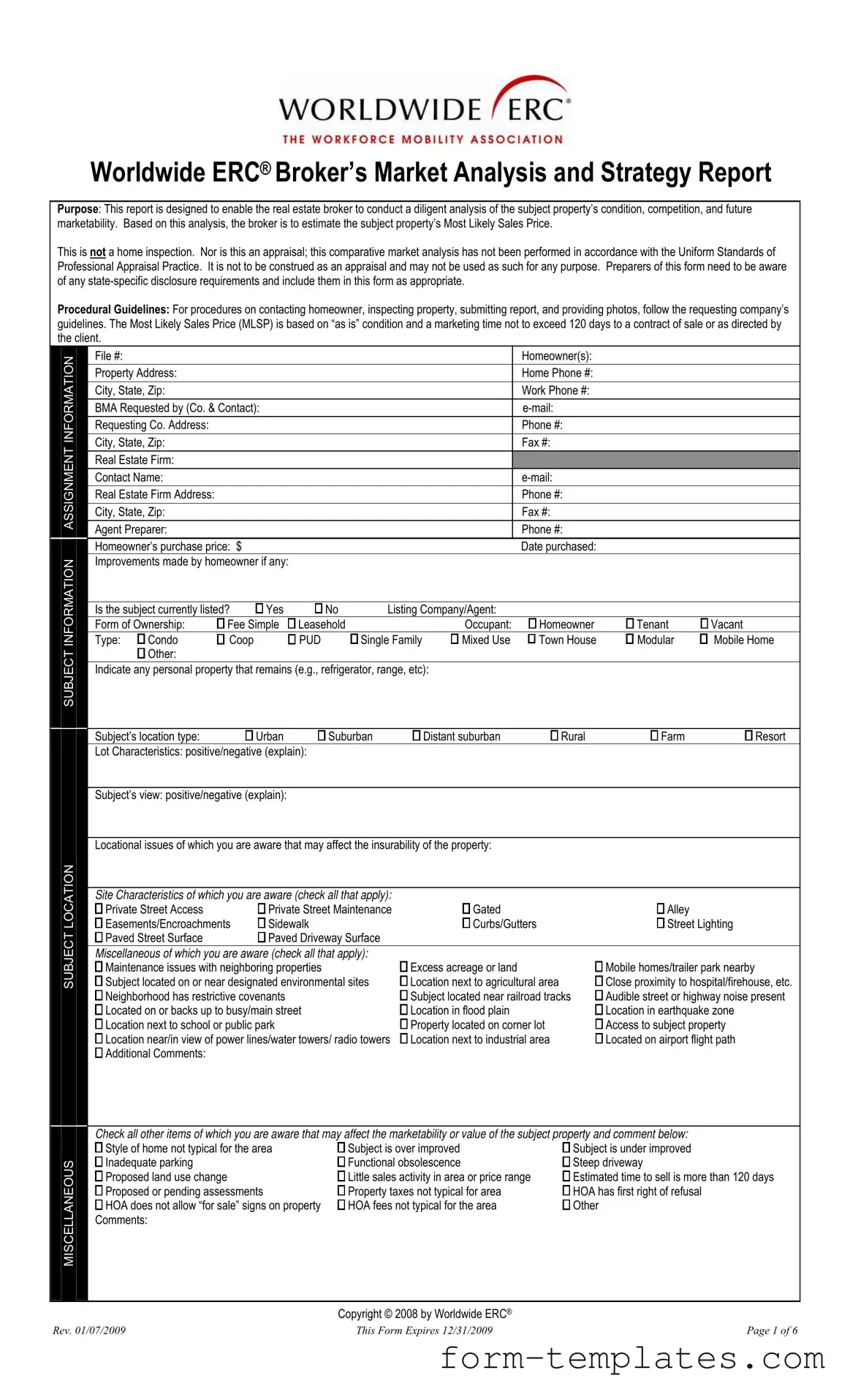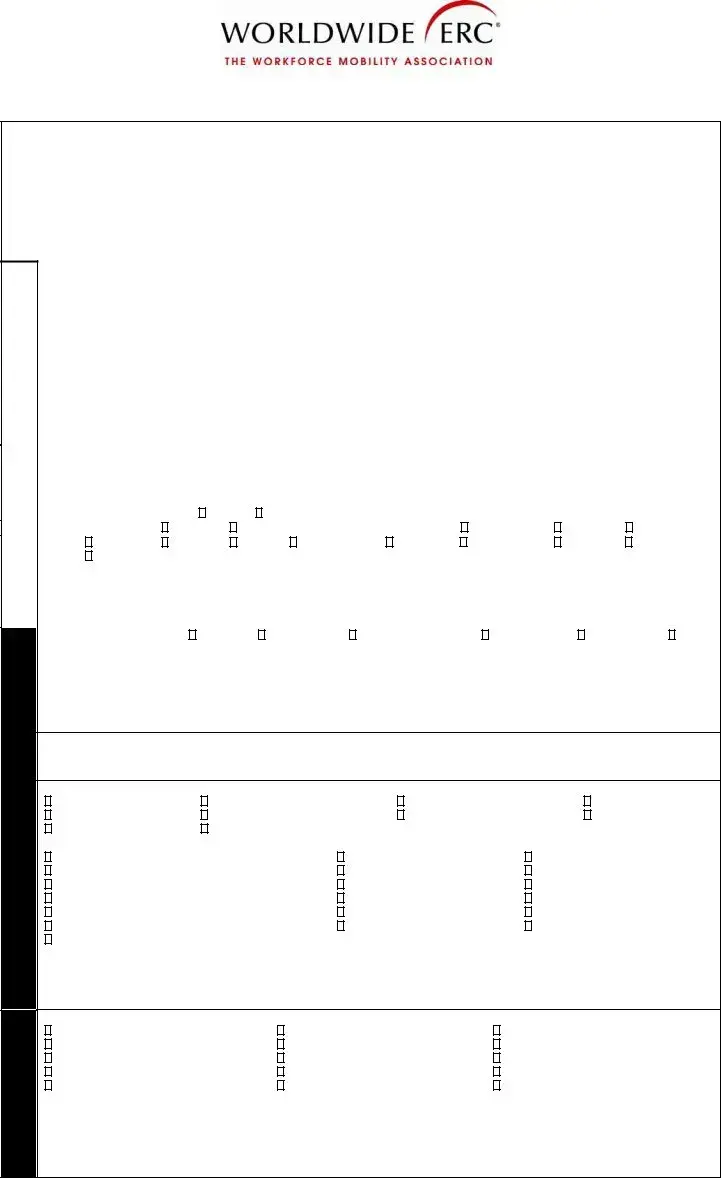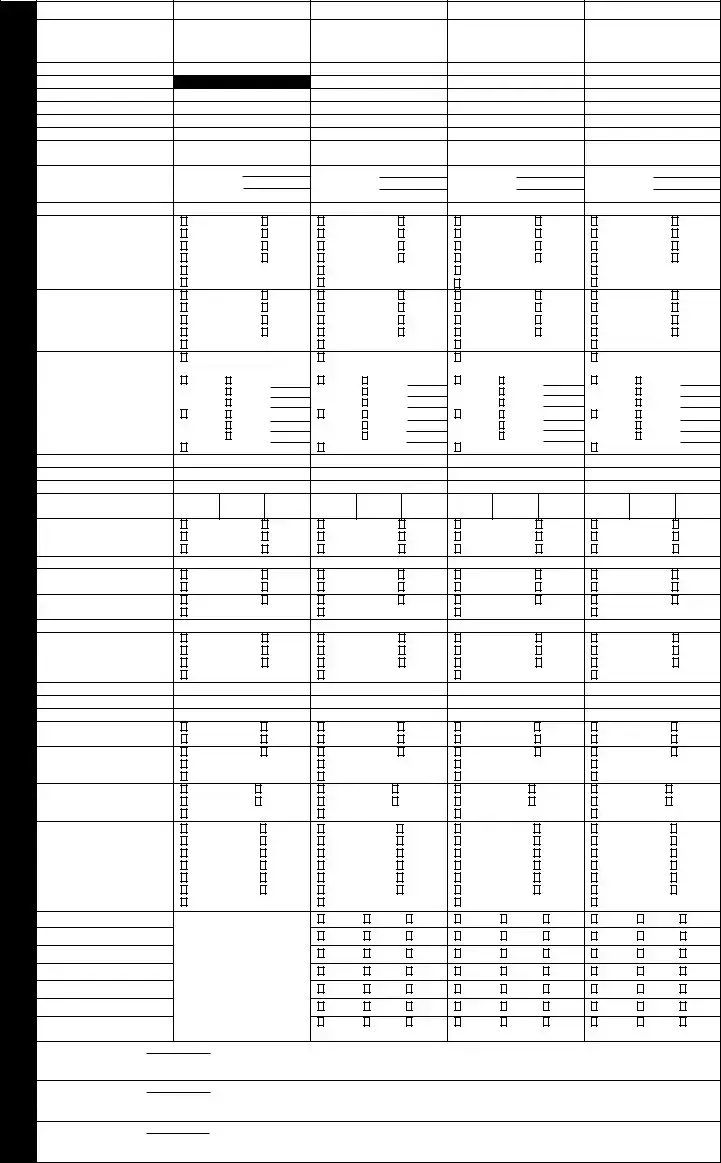The ERC Broker Market Analysis form is designed to help real estate brokers conduct a thorough analysis of a property's condition, its competition, and its future marketability. By evaluating these factors, brokers can estimate the Most Likely Sales Price (MLSP) for the property. It is important to note that this analysis is not a home inspection or an appraisal, and it should not be used as such.
How is the Most Likely Sales Price (MLSP) determined?
The MLSP is based on the property's current "as is" condition and a marketing time that typically does not exceed 120 days. The broker must consider various factors, including the property's location, condition, and comparable sales in the area to arrive at this estimate.
What should be included in the property condition inspection?
The property condition inspection should include a detailed assessment of various aspects, such as:
-
Decor and overall appearance
-
Signs of water damage
-
Structural integrity issues
-
Any maintenance concerns
Additionally, the broker should document any necessary repairs and improvements, along with estimated costs for each item.
Are there specific state disclosure requirements to consider?
Yes, brokers must be aware of and comply with any state-specific disclosure requirements when filling out the form. This may include information about property conditions, neighborhood issues, or other factors that could affect the property's value or marketability.
The form requires the broker to identify the most probable financing options for the property, which may include:
-
FHA loans
-
VA loans
-
Conventional mortgages
-
Cash purchases
Understanding the financing landscape can help in assessing potential buyer interest and marketability.
What is the importance of analyzing the neighborhood and broader market area?
Analyzing the neighborhood and broader market area is crucial for understanding local economic conditions, property values, and competition. This analysis helps brokers make informed decisions about pricing and marketing strategies. Factors such as the presence of major corporations, local amenities, and market trends can significantly impact the property's attractiveness to buyers.
How should competing listings be evaluated?
Competing listings should be evaluated by comparing similar properties that have sold recently or are currently on the market. Brokers should consider aspects such as:
-
Original and current list prices
-
Seller concessions
-
Days on market
-
Condition and features of the competing properties
This comparison provides valuable insights into how the subject property stacks up against its competition, aiding in setting an appropriate sales price.






